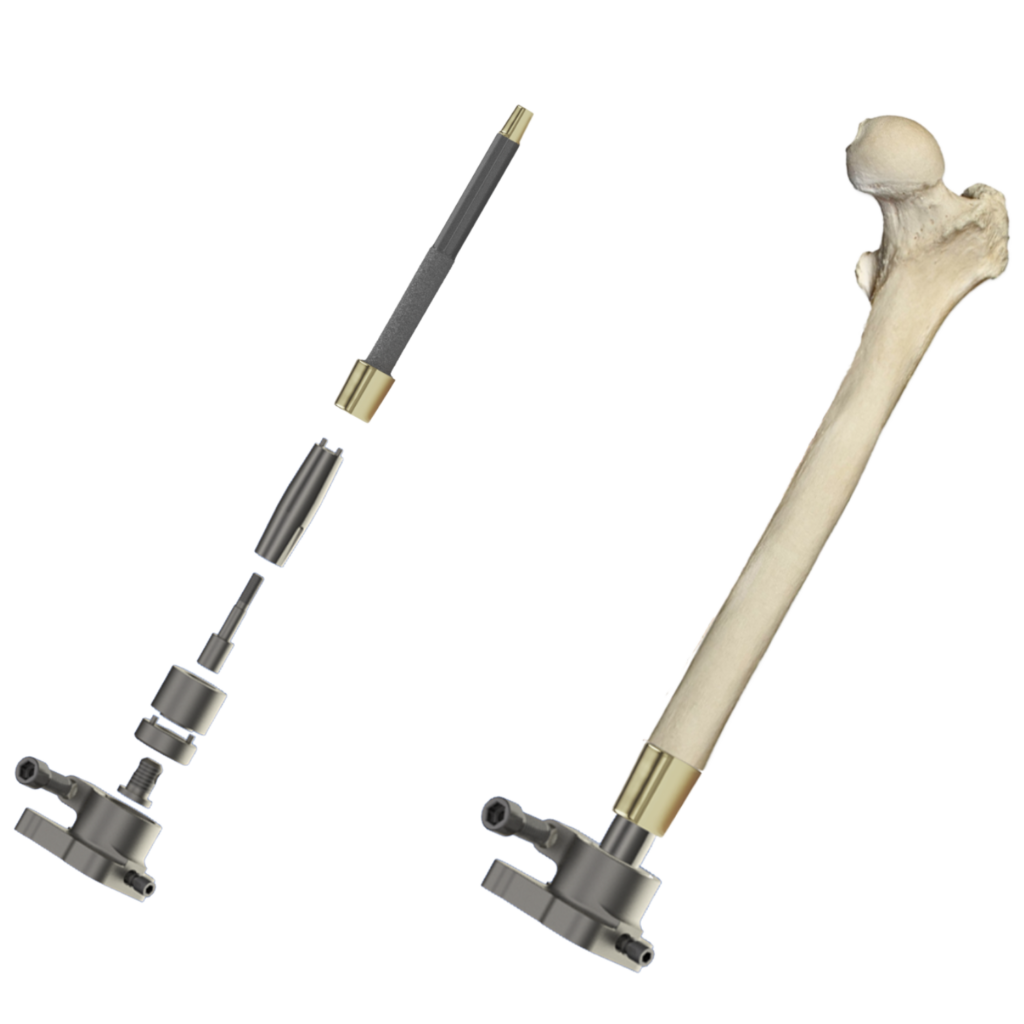Connect With Us!
If you’re considering osseointegration, or you’ve completed your surgery and are now enjoying life with osseointegration, we want to hear from you! Share your ideas, news, stories, feedback and pictures with us here!
Osseointegration (also called Direct Skeletal Fixation, or DSF) is a life-changing procedure for those with limb and digit loss. Osseointegration involves the fitting of an advanced implant into the residual bone at the site of amputation. New bone growth fixes the implant, which then connects to an external prosthetic. This connection replaces the socket of more traditional prosthetics.
Osseointegration can be completed on above and below knee, and above and below elbow amputees, on one or both limbs. It can also be used to secure digital (finger) prosthetics), and, less commonly, scapula and pelvic osseointegration can be completed for people with whole limb loss.
This often remains true regardless of the cause of amputation, while recent technical advances mean that, even where the residual bone is extremely short, or otherwise compromised, osseointegration may still be possible.
Osseointegration surgery is normally performed in a single stage, although it may be carried out in two separate surgeries depending on your suitability. Typically, it can take around two hours to complete a single stage procedure, although this can vary. The surgery is often completed using sedation and a spinal or epidural block that temporarily stops feeling below the waist.
The first step in your surgery involves making an incision at the distal end of your residual limb, which is then opened further to expose your residual bone. Utilising special instruments, the end of the bone is prepared. Your surgeon will then locate and remove any neuromas that may have formed in the area of attachment. Your muscles will be re-organised and attached directly to your bone. This will allow you to control your prosthesis with your muscles in the future.
During implantation, the bone canal is prepared using specialised tools which convert the canal from an oval to a cylindrical shape. Broaches are then used to match this shape and cut the fins for your implant. Bone extracted during this process is collected for use as graft material. Once the desired implant size is reached, the graft material is inserted in the cavity and the implant press-fitted in the canal. A tight fit here is necessary to achieve initial stability and enable accelerated rehabilitation.
A soft tissue flap covers the muscles and the implant. A circular opening (called a stoma) is created at the base of the residual limb overlying the tip of the implant. The dual cone adapter is connected to the implant through this opening, allowing your prosthetic to be attached externally.

If you’re considering osseointegration, or you’ve completed your surgery and are now enjoying life with osseointegration, we want to hear from you! Share your ideas, news, stories, feedback and pictures with us here!

The Osseointegration Group exists to enable amputees worldwide to improve their quality of life through the application of clincal expertise and technical and technological innovation.
The OPL Device is not approved for sale in the US. Please contact us for further information on device availability in your region. Information provided via this website is for educational and communication purposes only. The material presented represents techniques and procedures used by The Osseointegration Group (OG). OG disclaims any and all liability for injury and/or other damages which result from an individual using techniques presented on this website.